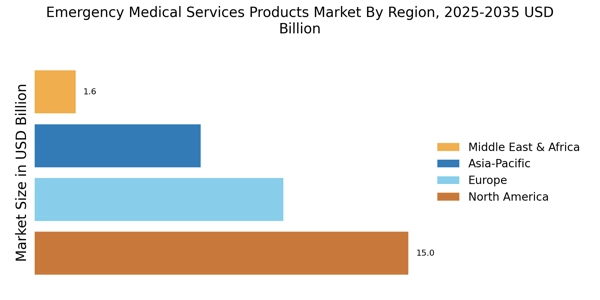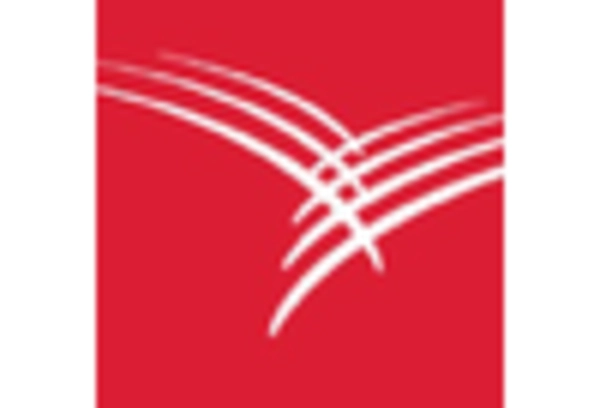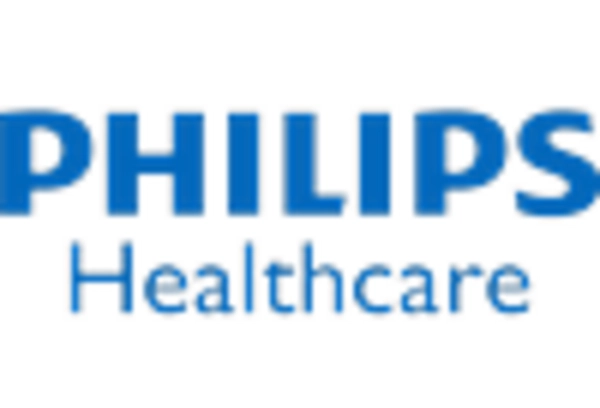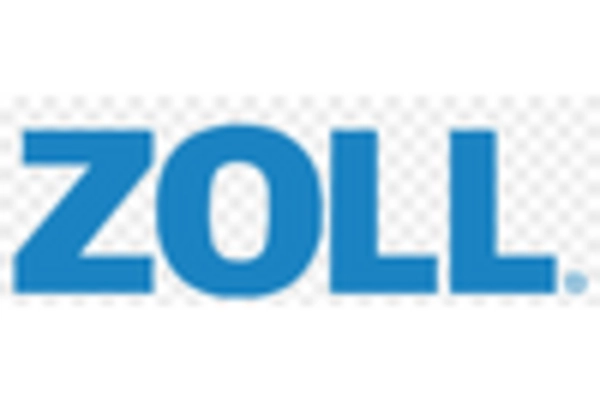Growing Awareness of Health and Safety
The rising awareness of health and safety among the public is a significant driver of the Emergency Medical Services Products Market. As communities become more informed about the importance of emergency preparedness, there is an increasing demand for training and equipment that supports effective emergency response. This trend is evident in the growing popularity of first aid training programs and the acquisition of emergency medical kits by individuals and organizations. Market data suggests that this heightened awareness could lead to a market growth rate of approximately 5% annually, as more people recognize the value of being equipped for emergencies. This cultural shift towards prioritizing health and safety is likely to sustain demand for emergency medical services products.
Rising Demand for Emergency Medical Services
The increasing incidence of emergencies and accidents has led to a heightened demand for emergency medical services products. As populations grow and urban areas expand, the need for efficient and effective emergency response systems becomes more pronounced. This trend is reflected in the Emergency Medical Services Products Market, where the demand for advanced medical equipment, such as automated external defibrillators and portable oxygen systems, is on the rise. According to recent data, the market is projected to grow at a compound annual growth rate of approximately 7% over the next five years. This growth is driven by the necessity for timely medical intervention, which underscores the importance of having well-equipped emergency services.
Regulatory Changes and Compliance Requirements
Regulatory changes and compliance requirements are shaping the landscape of the Emergency Medical Services Products Market. Governments and health organizations are continuously updating standards for emergency medical equipment and services to ensure safety and efficacy. Compliance with these regulations is essential for manufacturers and service providers, as it directly impacts their marketability and operational capabilities. The introduction of stricter guidelines has prompted many companies to innovate and enhance their product offerings, leading to a more competitive market environment. As a result, the market is expected to experience growth driven by the need for compliance, with estimates indicating a potential increase in market value as companies adapt to these evolving standards.
Technological Innovations in Medical Equipment
Technological advancements play a pivotal role in shaping the Emergency Medical Services Products Market. Innovations such as telemedicine, mobile health applications, and advanced diagnostic tools are transforming how emergency medical services operate. These technologies enhance the efficiency of emergency response teams, allowing for quicker assessments and interventions. For instance, the integration of real-time data analytics in emergency medical systems has shown to improve patient outcomes significantly. The market for these innovative products is expected to expand, with estimates suggesting a potential increase in market size by over 20% in the next few years. This trend indicates a shift towards more sophisticated and responsive emergency medical services.
Increased Government Investment in Healthcare Infrastructure
Government initiatives aimed at improving healthcare infrastructure are significantly influencing the Emergency Medical Services Products Market. Increased funding for emergency services, particularly in underserved areas, is leading to the procurement of advanced medical equipment and training programs. This investment is crucial for enhancing the capabilities of emergency medical services, ensuring they are well-prepared to handle various medical emergencies. Recent reports indicate that several countries have allocated substantial budgets to upgrade their emergency response systems, which is likely to result in a robust growth trajectory for the market. The focus on building resilient healthcare systems is expected to drive demand for emergency medical services products.


















Leave a Comment